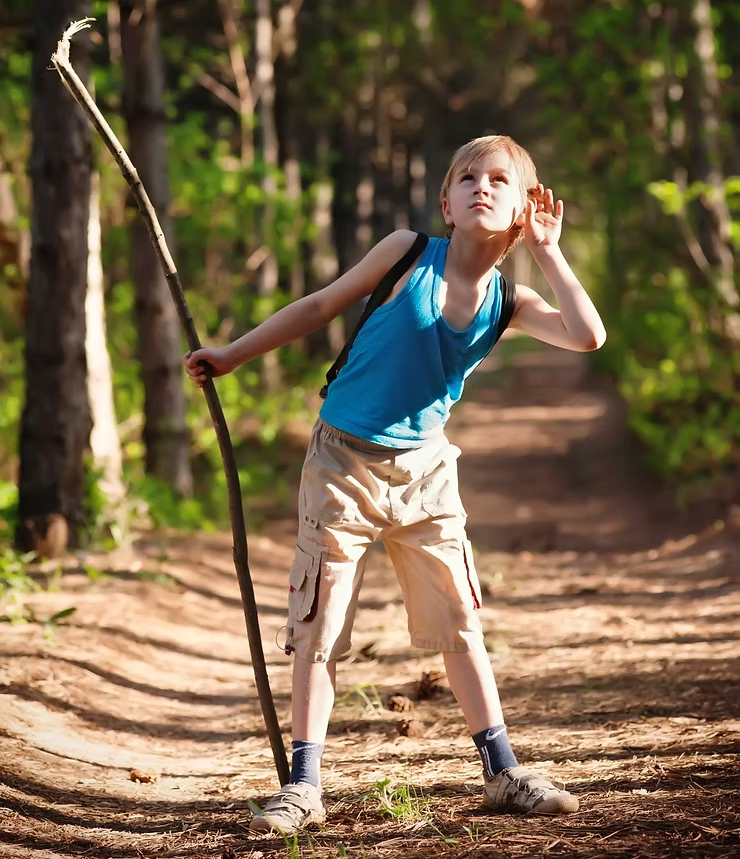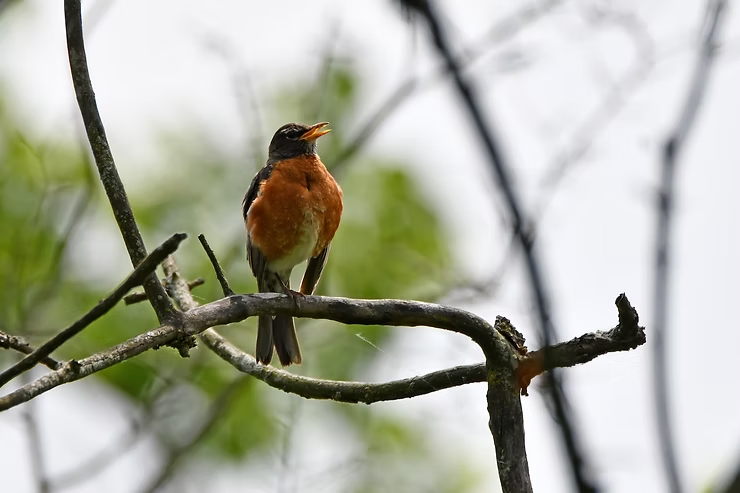The sounds of spring are in the air
- Willy's Wilderness
- May 6, 2024
- 4 min read
Updated: Jul 24
Spring is one of the best times to discover the soundscape all around you. There is so much new life happening — with chirps, tweets, rustles, rushes, whooshes and beeps to go with it. So go outside and open up your ears!

Here are some tips to help you hear all the sounds of spring.
Learn how to make fox ears
Have you ever noticed how foxes have tall, pointy ears that almost look like half cones on their head? It’s to funnel sound straight to their eardrums. Their hearing is fantastic!

You can make your hearing more like a fox’s. Cup your hands. Place them behind your ear flaps. Now sound is funneled right into your head! Listen for a bit with your fox ears. Remove them for a couple seconds. Put your fox ears back. Can you hear the difference?
Stand still
Listen for sounds while you’re walking, running, skipping and playing. Sounds of spring are everywhere. But if you pause for awhile, you give nature a chance to get used to you. Then insects, birds and frogs might go back to making their normal noises.
You don’t just have to stand. Bring a chair, find a comfortable spot up in a tree, sit on a rock or lay on a picnic blanket.
Close your eyes
We humans rely so much on our sight that we sometimes forget to use our other senses. Find a safe spot. (Don’t park yourself in the middle of a busy trail!) Close your eyes. What do you notice?
Take a deep breath
It might feel weird to slow down, stand still, maybe close your eyes or use fox ears and listen. Sometimes it helps to take a deep breath in and a slow exhale out to focus your mind on sound. Repeat once or twice.
Make it a game!
How many different sounds did you hear? Can you hear more sounds than your friends? Or work together to see if you can hear 10 different sounds. Can you hear 25? Create a scavenger hunt of the sounds you hope you will hear on your adventures outside. Can you cross them all off?
Here are a few sounds you can be listening for this spring.
Birds singing

Birds tend to make a lot of wonderful noises this time of year. They might be singing to attract a mate, sending off alarm calls to keep others out of their territory or begging parents for food.
Here are a few iconic spring bird calls:
Red-winged blackbird: Listen for the male’s trill of “conk-la-ree!” The females will respond with three to five short “chit!” or “check!” sounds strung together. Try singing “chit-chit-chit-chit-chit!” Do you sound like a red-winged blackbird?
American robin: When you think robin, think that they are trying to cheer up everyone for spring! They string together 10 or so clear whistles that sound a little like, “cheerily, cheer up, cheer up, cheerily, cheer up.”
Black-capped chickadee: Keep your ears open to a melodious “fee-bee.” Sometimes the little puff balls sing about a delicious meal, with “Cheeeeeeseburger!” When alarmed, they call out their name: “Chick-a-dee-dee-dee!” The bigger the threat, the more “dees” get tacked on to the end.
Birds make other noses, too. Listen for the drum of woodpeckers. Besides ferreting out grubs for a tasty snack, their drilling is a warning to others in spring. “Hey, this is my territory!”
Wind rustling
Prairie grasses like big blue steam and Indian grass burst up in spring. Cattails grow in marshes. Leaves unfurl on tree branches. All these make wonderful sounds when breezes come rushing through. Can you tell a difference between wind blowing through grasses and wind blowing through leaves?
Frog beeps

Frogs and toads start their calls in early spring and keep on chirping, peeping, gronking and clacking all through summer. Did you know that you can figure out which amphibian is out there based on the type of calls they make?
These are a few to listen for:
Chorus frog: Take a plastic comb and run your fingers over the teeth. That is what these little guys sound like! They are some of our earliest frog calls, and they sing through May.
American toad: Listen for a long pleasing trill. It can last up to 30 seconds! One toad might start while another is finishing up. They overlap, like singing in a round. You hear them all over Will County from mid-April through May and often into summer.
American bullfrog: Our biggest frog has a big, deep call to go with it. The “rumm . . . rumm . . . rumm” of the bullfrog can be heard in May and June.
Train your ears to the different types of frogs and toads that can be found in the Chicagoland area with this great guide from the Peggy Notebaert Nature Museum.
Insect chorus
Insects buzz and drone, chirp and hum. The insects you might hear in spring are grasshoppers, crickets, katydids, bees, long-horned beetles like milkweed beetles, flies and mosquitoes. There are a lot of insects, so just give yourself a pat on the back for identifying them as a group.
Want to dive in deep? Learn to be an expert insect musicologist? This Songs of Insects Guide is a good start.
During the spring and summer of 2024, there is one type of insect you should have plenty of practice identifying by sound. Listen for the long, loud droning of cicadas. You can’t miss it! Read up more about the cicadas making an appearance in Will County in 2024.
What have you heard outside this spring? Did you discover something unexpected or new? Have fun in spring listening to the wonderful sounds all around you!
____________


